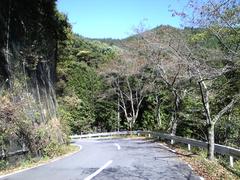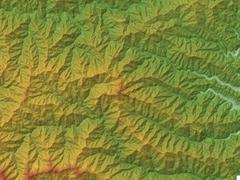
Bushū-Nakagawa Station Visiting Hours, Tickets, and Travel Guide in Chichibu, Japan
Date: 04/07/2025
Introduction: The Gateway to Chichibu
Nestled in the tranquil landscapes of Saitama Prefecture, Bushū-Nakagawa Station is more than just a stop along the Chichibu Railway—it’s an emblem of the region’s history, culture, and natural beauty. Established in the early 20th century, the station was integral to the economic development of Chichibu, supporting the local limestone industry and connecting rural communities that were once isolated by mountainous terrain. Its very name preserves the memory of the former Bushū province and its proximity to the lifegiving Nakagawa River.
Today, Bushū-Nakagawa Station welcomes both residents and travelers eager to explore Chichibu’s ancient shrines, vibrant festivals, and panoramic hiking trails. Whether you’re drawn by historic sites like Chichibu Shrine, the dazzling Chichibu Night Festival, or the famed shibazakura (moss phlox) fields of Hitsujiyama Park, this station is your portal into authentic Japanese culture and unspoiled scenery (Chichibu Railway Official, Chichibu City Travel Guide, Rural Japan: Chichibu Mountain Walk).
Contents
- Origins and Development of Bushū-Nakagawa Station
- The Station’s Role in Chichibu’s Economy and Connectivity
- Historical and Cultural Context
- Architecture and Station Layout
- Visiting Hours, Ticketing, and Accessibility
- Tourism and Community Life
- Chichibu Night Festival & Pilgrimage Circuit Access
- Rural Heritage Preservation & Modern Adaptations
- Essential Visitor Information
- Chichibu Shrine: Visiting Hours, Ticketing, and Highlights
- Top Historical Sites and Seasonal Attractions Near Bushū-Nakagawa
- Seasonal Highlights, Festivals, and Local Tips
- FAQs
- Summary and Final Tips
Origins and Development of Bushū-Nakagawa Station
Bushū-Nakagawa Station (武州中川駅) began serving the Chichibu region as part of the Chichibu Main Line in the early 20th century. The Chichibu Railway Company, founded in 1899, played a pivotal role in moving limestone from Mount Bukō, facilitating both industry and population growth in the area (Chichibu Railway Wikipedia).
The station’s name—combining “Bushū” (the old province name) and “Nakagawa” (Nakagawa River)—reflects both regional history and its riverside location.
The Station’s Role in Chichibu’s Economy and Connectivity
Initially, the railway and Bushū-Nakagawa Station were crucial for transporting limestone, with Taiheiyo Cement now the railway’s largest shareholder (Chichibu Railway Wikipedia). Over the decades, the line also became indispensable for passenger travel, connecting local residents and students to schools, workplaces, and markets, while opening up Chichibu’s rural beauty to tourists (Chichibu Railway Official).
Historical and Cultural Context
Chichibu’s roots run deep, with archaeological sites from the Old Stone Age and important historical events like the 1884 Chichibu Incident. The region is known for its ancient burial mounds, the Chichibu Okan road, and the spiritual 34-temple pilgrimage circuit (Chichibu City Travel Guide).
While Bushū-Nakagawa Station is not a direct site of major historical events, its presence enables visitors to access and appreciate the rich cultural fabric of the Chichibu valley.
Architecture and Station Layout
Reflecting rural Japanese station aesthetics, Bushū-Nakagawa features a simple, functional building and an uncluttered platform. Basic amenities such as ticket machines, restrooms, and waiting areas suit both daily commuters and infrequent visitors (Wikimedia Commons: Bushū-Nakagawa Station).

The station’s modest scale creates a peaceful, welcoming atmosphere that harmonizes with the Chichibu landscape.
Visiting Hours, Ticketing, and Accessibility
Operating Hours:
Bushū-Nakagawa Station is open daily, with trains running from approximately 5:00 AM until midnight. There are no restricted visiting hours, as it serves as a regular stop on the Chichibu Main Line.
Ticketing:
- Tickets are available from onsite machines or can be purchased using IC cards (Suica/PASMO).
- Special passes, such as the Seibu 1 Day Pass + Nagatoro or Seibu 2 Day Pass + Nagatoro, offer unlimited travel on Seibu and Chichibu lines, ideal for tourists (Chichibu Railway Official).
- For special trains like the SL Paleo Express (steam locomotive), advance reservations are recommended.
Accessibility:
- The station has ramps and tactile paving for wheelchair users.
- Facilities are basic; travelers with special needs should contact Chichibu Railway in advance (Chichibu Omotenashi Tourism).
Tourism and Community Life
Bushū-Nakagawa Station is perfectly situated for exploring Chichibu’s lesser-known trails and historic shrines. It is a lifeline for residents and a tranquil entry point for visitors seeking nature, culture, and the rhythm of rural Japan (Rural Japan: Chichibu Mountain Walk).
Chichibu Night Festival & Pilgrimage Circuit Access
The station supports access to the world-renowned Chichibu Night Festival (UNESCO Intangible Cultural Heritage, December 2–3), and is a convenient starting point for the Chichibu 34 Kannon Pilgrimage (Chichibu City Travel Guide, Chichibu Railway Official). While not adjacent to the main festival site, it connects visitors to key areas via the railway network.
Rural Heritage Preservation & Modern Adaptations
Despite demographic shifts and rural depopulation, Bushū-Nakagawa Station remains active, buoyed by local demand and Chichibu’s increasing popularity among travelers. The Chichibu Railway’s introduction of sightseeing trains like the SL Paleo Express, along with local tourism initiatives, has helped sustain and revitalize the line (Chichibu Omotenashi Tourism).
Essential Visitor Information
Getting There from Tokyo:
Take the Seibu Ikebukuro Line’s Limited Express “Laview” from Ikebukuro to Seibu-Chichibu Station (80–90 minutes), transfer to the Chichibu Railway, and continue to Bushū-Nakagawa Station (Rural Japan: Chichibu Mountain Walk).
Amenities:
- Restrooms and sheltered waiting areas
- Ticket machines (IC card compatible)
- Limited English signage (translation apps recommended)
- Vending machines and occasional souvenir stands
Travel Tips:
- Visit midweek or early during festival days to avoid crowds
- Prepare for variable weather conditions; bring sun protection in summer and warm clothing in winter
- Plan your itinerary using the Chichibu Railway Official website or the Audiala app for live updates
Chichibu Shrine: Visiting Hours, Tickets, and Highlights
History & Cultural Significance:
Chichibu Shrine, over 2,000 years old, is Chichibu’s spiritual heart. Famous for its Edo-period wood carvings, it hosts the mesmerizing Chichibu Night Festival and is designated as an Important Cultural Property.
Visiting Hours & Fees:
- Open daily, 9:00 AM–5:00 PM (longer hours during festivals)
- General admission is free; special exhibitions may charge a nominal fee
Getting There:
- About 1.5 km from Bushū-Nakagawa Station—walk or take a taxi
Amenities:
- Accessible restrooms and waiting areas
- Some areas may be less accessible due to historic structures
Tips:
- Visit during spring or autumn for the best weather and views
- Photography is allowed in most outdoor areas
- Participate respectfully in shrine customs
Top Historical Sites and Seasonal Attractions Near Bushū-Nakagawa
- Hitsujiyama Park: Renowned for shibazakura (moss phlox) blooms (mid-April–early May), with spectacular views of Mount Bukō.
- Mount Bukō & Hashidate Limestone Cave: Hiking and a rare public-access limestone cave.
- Nagatoro & Arakawa River: River cruises, scenic gorges, and outdoor activities.
- Hodosan Shrine & Mount Hodo: Accessible by cable car, with panoramic views and a plum garden.
- Chichibu Muse Park: Museums, cherry blossoms, and autumn foliage.
Seasonal Highlights, Festivals, and Local Tips
- Spring: Shibazakura Festival at Hitsujiyama Park; cherry blossom hanami (Chichibu Area Tourism Organization, Japan Travel)
- Summer: River rafting and firefly viewing (Japan Guide)
- Autumn: Ginkgo tree tunnels, dahlia gardens, and fresh soba festivals
- Winter: Illuminated icicle sites and hot springs (Magical Trip)
Local Cuisine: Waraji katsu don, Chichibu soba, miso-gratin oyaki, and regional sake (Japan Travel Navitime)
Souvenirs: Chichibu Meisen silk, festival memorabilia, local sweets
Frequently Asked Questions (FAQ)
Q: What are the Bushū-Nakagawa Station visiting hours?
A: The station operates daily, roughly from 5:00 AM to midnight in line with train schedules.
Q: How do I buy tickets?
A: Purchase at the station’s vending machines, use IC cards, or reserve special train tickets online.
Q: Is the station accessible for travelers with disabilities?
A: There are ramps and tactile paving, but some facilities are limited. Contact the railway for assistance.
Q: Are there guided tours?
A: Yes, local tourism offices and operators offer tours tailored to history and nature.
Q: What’s the best season for photography?
A: Spring for shibazakura, autumn for foliage and ginkgo, and winter for icicles.
Summary and Final Tips
Bushū-Nakagawa Station is a living symbol of Chichibu’s resilience and charm. Its evolving role—from industrial hub to tourist gateway—reflects the region’s dynamic blend of heritage and modernity. Convenient train services, affordable tickets, and proximity to top sites make it ideal for discovering Chichibu’s temples, trails, festivals, and cuisine. For up-to-date schedules and travel planning, use the Audiala app and official tourism websites (Chichibu Railway Official, Chichibu Omotenashi Tourism, Chichibu City Travel Guide).
Sources and Further Information
- Chichibu Railway Wikipedia
- Chichibu Railway Official
- Chichibu City Travel Guide
- Wikimedia Commons: Bushū-Nakagawa Station
- Chichibu Omotenashi Tourism
- Rural Japan: Chichibu Mountain Walk
- Japan Guide: Chichibu Night Festival
- Japan Travel: Chichibu
- Magical Trip: One Day Trip to Chichibu from Tokyo
- Japan Travel Navitime: Chichibu
- Chichibu Area Tourism Organization
- Tokyo Digi-Joho: Chichibu Travel Tips
For a seamless trip, download the Audiala app for real-time transportation updates, tickets, and curated guides. Explore Chichibu with confidence and discover the wonders that await at Bushū-Nakagawa Station.



